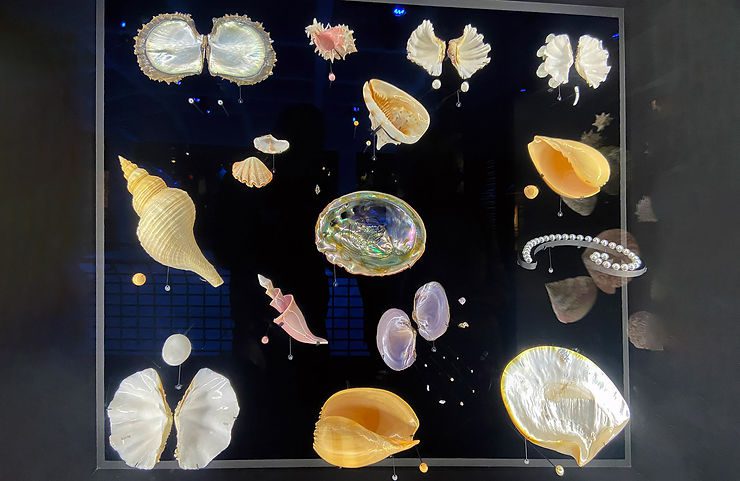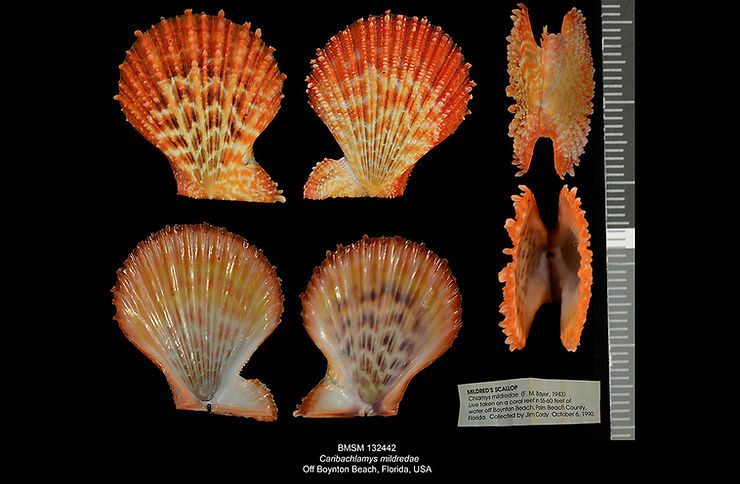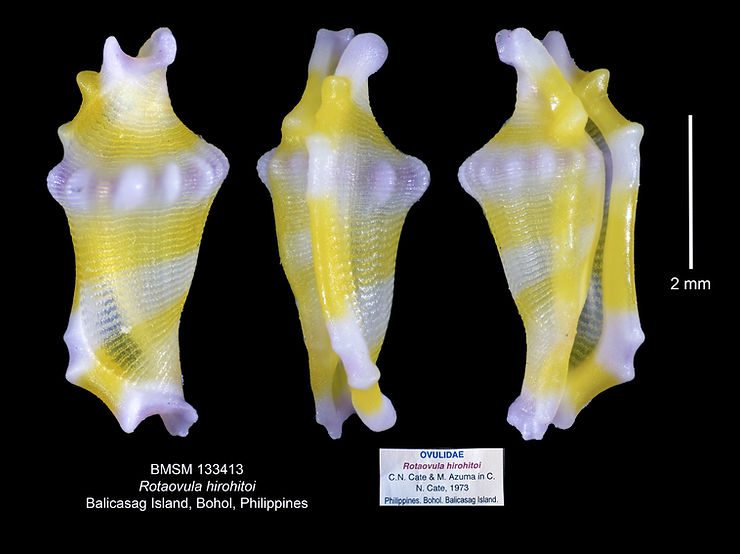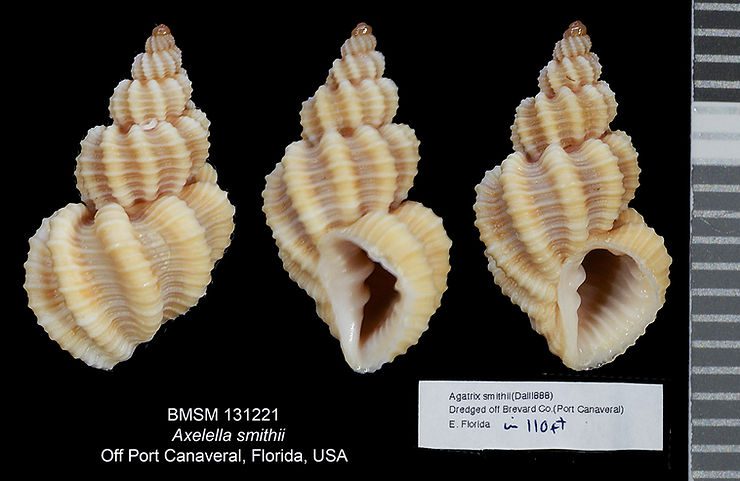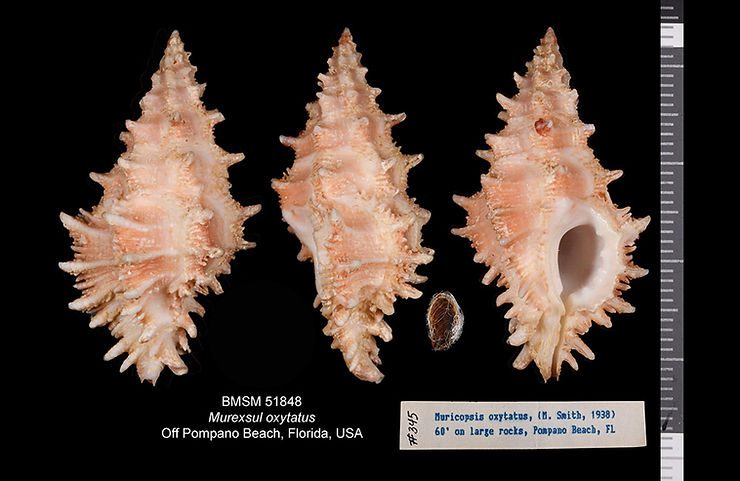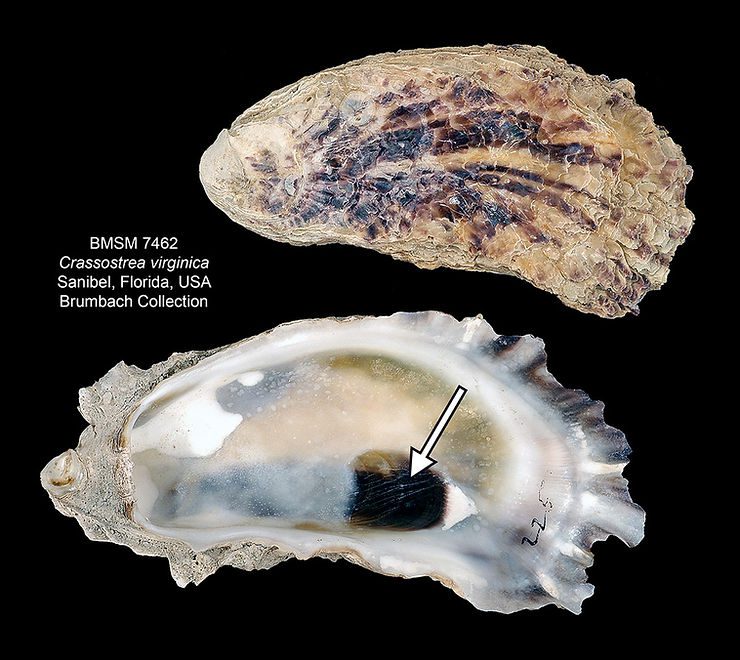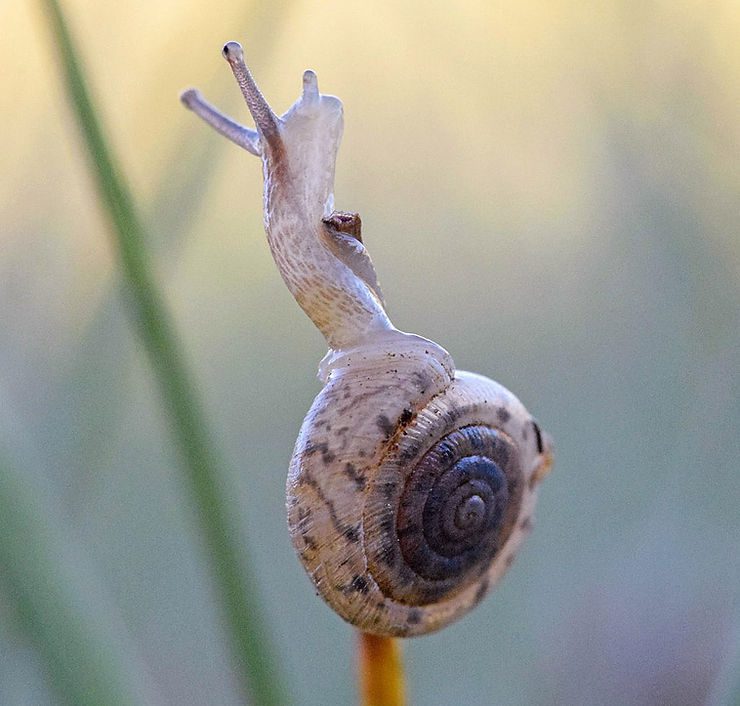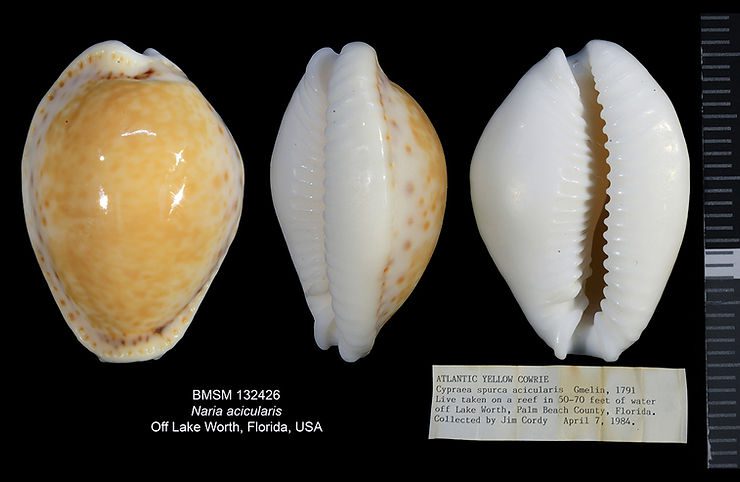
Shell of the Week: The Atlantic Yellow Cowrie
Naria acicularis(Gmelin, 1791), reaches 31 mm (about 1.2 inches). The shell is very variable in coloration and shape, but with a general coloration of yellow to tan with whitish or darker spots. The base and apertural “teeth” are white. The species has a broad distribution in the tropical western Atlantic (but is not present in SW Florida) and is related and relatively similar to the recent Caribbean invasive Trush Cowrie (Naria turdus), and must not be confused with the latter, which tends to b

